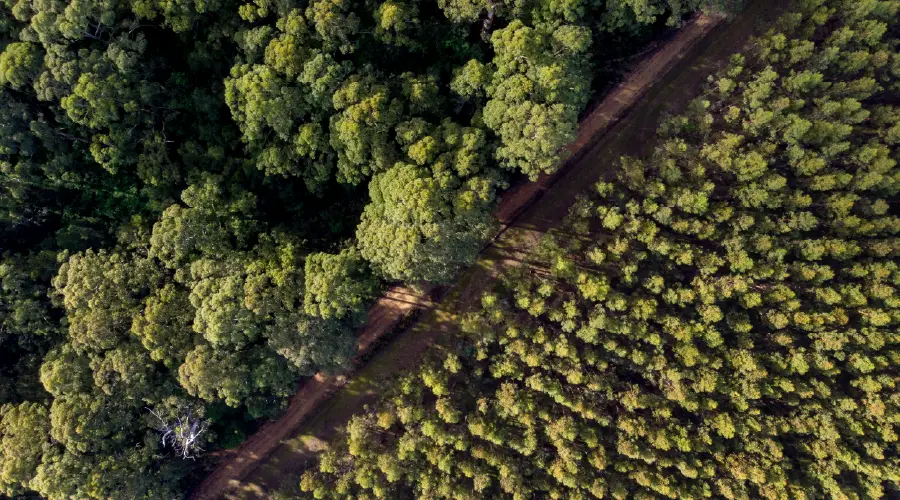Menu
Menu
Home > Blogs > Sustainability > Printing and the environment

In the digital age, the environmental impact of traditional printing practices often comes under scrutiny. Common misconceptions paint the industry as a significant contributor to deforestation, waste, and carbon emissions.
However, a closer look reveals a different story—one where the printing industry emerges as a champion of sustainability. This article aims to debunk some of the myths surrounding printing and its environmental impact, highlighting how businesses, especially those in Australia, can contribute positively to the planet by making informed choices.
Contrary to the belief that printing leads to deforestation, the industry heavily relies on sustainable forestry practices. Certifications such as the Forest Stewardship Council (FSC) and the Sustainable Forestry Initiative (SFI) ensure that the paper used in printing comes from forests that are responsibly managed. These forests are not only sustainably harvested but are also subject to replantation efforts, aiding in carbon sequestration and combating climate change.
In Australia, paper comes from managed regrowth forests or planted forests where the cycle of planting, growing and harvesting is carefully controlled. Australia has two million hectares of working forests and growing! This cycle of renewal positions the paper industry as a key player in maintaining forest health and biodiversity.
Paper is one of the most recyclable materials in the world, boasting an impressive recycling rate. Paper recycling rates in Australia are amongst the highest in the world with over 87% of all paper and paperboard being recovered (CEPI Sustainability Report, 2018).
This circular process significantly reduces the demand for virgin resources, conserving energy and minimising carbon emissions. Advances in recycling technology have further streamlined this process, enhancing the industry’s sustainability credentials. Moreover, the biodegradability of paper products means they do not linger in landfills, unlike their electronic counterparts.

The modern printing sector has made remarkable strides in adopting renewable energy sources such as solar and wind power. This shift not only reduces the carbon footprint of printing operations but also aligns with global sustainability goals. The paper industry in Australia is leading the way. Australian Paper’s Maryvale Mill is the largest baseload generator of renewable energy in Victoria. And Norske Skog’s Boyer Mill in Tasmania, which produces a lot of Australia’s magazine and newsprint paper, has instituted a heat recovery and reuse system which lessens its reliance on coal. This will equate to 14,000 less cars on the road. Additionally, the industry has seen the introduction of eco-friendly materials, including soy-based and vegetable-based inks, which offer a greener alternative to traditional petroleum-based inks.
Technological advancements have led to significant improvements in printing efficiency, reducing waste and energy consumption. Digital printing, in particular, allows for precise quantity control, eliminating overproduction. These efficiencies, coupled with the industry’s role in supporting economies and fostering job creation, underscore the multifaceted benefits of printing in a sustainable landscape.
It’s important to challenge the misconceptions around the environmental impact of printing. You have probably come across the term ‘greenwashing’. Greenwashing is when companies make a claim that a particular good or service has certain environmental benefits which either can’t be substantiated or are misleading.
One of the most common of these claims is when companies say that receiving bills via email is better for the environment. Not only is this not always true, but it can disadvantage the most vulnerable members of society that depend on traditional postal transactional mail. 86% of Australians also believe that consumers should have the right to choose how they receive communication (printed, or electronically) at no extra charge from financial organisations and service providers (Toluna Australia, 2017).
By understanding the industry’s commitment to sustainability—from the responsible management of forests to innovations in recyclable materials—we can appreciate the role of printing in a low carbon economy.

At Worldwide, we are proud to contribute to a sustainable journey. Our Production Hub has been certified 100% Carbon Neutral for over 10 years and a number of our local Worldwide Centres are also 100% Carbon Neutral certified – reflecting our dedication to reducing the environmental impact of our services. By partnering with us, businesses can not only enhance their branding and marketing efforts but also align with eco-friendly practices that benefit the planet.
The printing industry’s journey towards sustainability is not just about mitigating environmental impacts but also about embracing opportunities for innovation and growth in harmony with the Earth. By dispelling the myths and highlighting the positive strides in sustainable printing, we invite businesses to join us in this green revolution, ensuring a healthier planet for future generations.
"*" indicates required fields